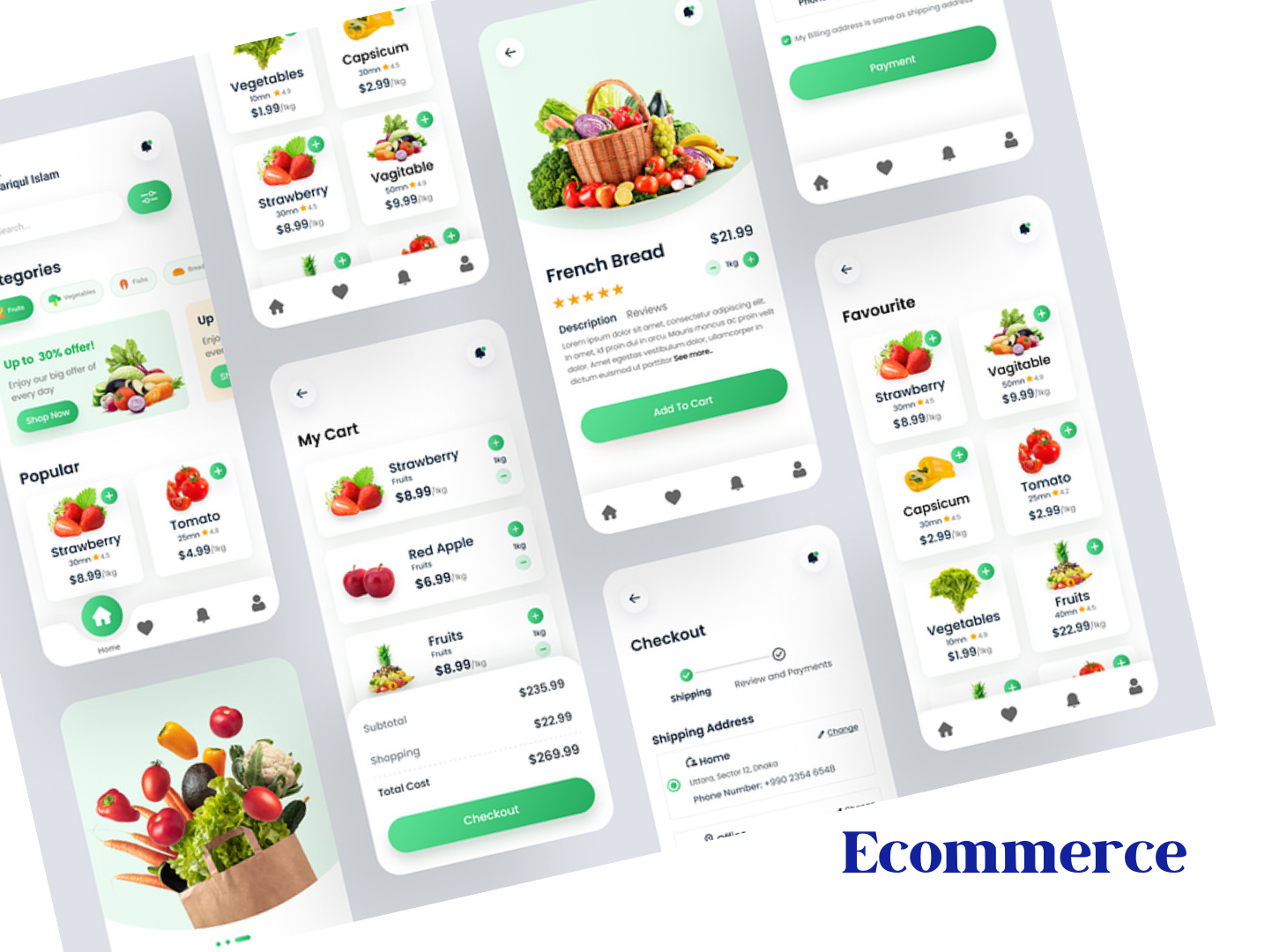
E-Commerce
An e-commerce application, often referred to as an e-commerce platform or online shopping platform, is a software solution that facilitates the buying and selling of goods and services over the internet. These applications enable businesses to set up online storefronts, manage product listings, process payments, and provide a seamless shopping experience for customers.
Here's an overview of the content and features typically found in an e-commerce application:
Product Management
- Adding, editing, and organizing product listings.
- Managing product descriptions, images, and prices.
- Categorizing products for easy navigation.
Shopping Cart
- A virtual shopping cart for customers to add and manage items they wish to purchase.
- Displaying the total cost and item quantities.
- Ability to update cart contents.
Checkout Process
- A streamlined and user-friendly checkout process.
- Multiple payment options, including credit/debit cards, digital wallets, and more.
- Billing and shipping information collection.
Order Management
- Tracking and managing customer orders.
- Order history and status updates.
- Invoice generation and printing.
Inventory Management
- Tracking product stock levels.
- Real-time stock updates as products are sold.
- Notifications for low stock levels.
- Backorder and pre-order capabilities.
Shipping and Delivery
- Integration with shipping carriers to calculate shipping costs and generate labels.
- Tracking shipments.
- Providing shipping options (e.g., standard, expedited, international).
Customer Management
- Managing customer accounts and profiles.
- Customer reviews and ratings.
- Customer communication and support features.
User Authentication
- Secure login and registration processes.
- Password reset and account recovery.
Search and Navigation
- Advanced search functionality to help customers find products.
- Filtering and sorting options.
- Product recommendations and related items.
Marketing and Promotions
- Discount codes, coupons, and promotional offers.
- Email marketing integration.
- Product recommendations and cross-selling.
Reporting and Analytics
- Sales reports and analytics.
- Customer behaviour analytics.
- Conversion tracking.
Multi-language and Multi-currency Support
- • The ability to serve a global customer base by supporting multiple languages and currencies.
Mobile Responsiveness
- • Ensuring the application is accessible and user-friendly on mobile devices.
Security
- Secure payment processing and data encryption to protect customer information.
- Regular security updates and vulnerability assessments.
Customization and Theming
- The ability to customize the look and feel of the storefront.
- Themes and templates for design flexibility.
Integtration
- Integration with payment gateways, accounting software, CRM systems, and other third-party tools.
SEO and Social Media Integtration
- Tools and features to improve search engine rankings and connect with social media platforms.
Support and Documentation
- User training and support resources.
- Online help, user manuals, and customer support.
Third-party Marketplace Integration
- Integration with online marketplaces like Amazon or eBay.
Content Management
- Tools for managing and publishing product-related content, such as blogs and articles.
E-commerce applications are used by a wide range of businesses, from small online stores to large multinational retailers. They are essential for conducting online sales, expanding market reach, and providing a convenient and efficient shopping experience for customers. The specific features and content of an e-commerce application can be tailored to the needs of the business and the nature of the products or services being sold.
